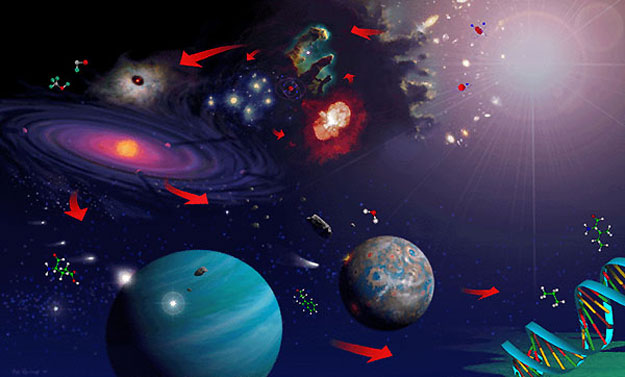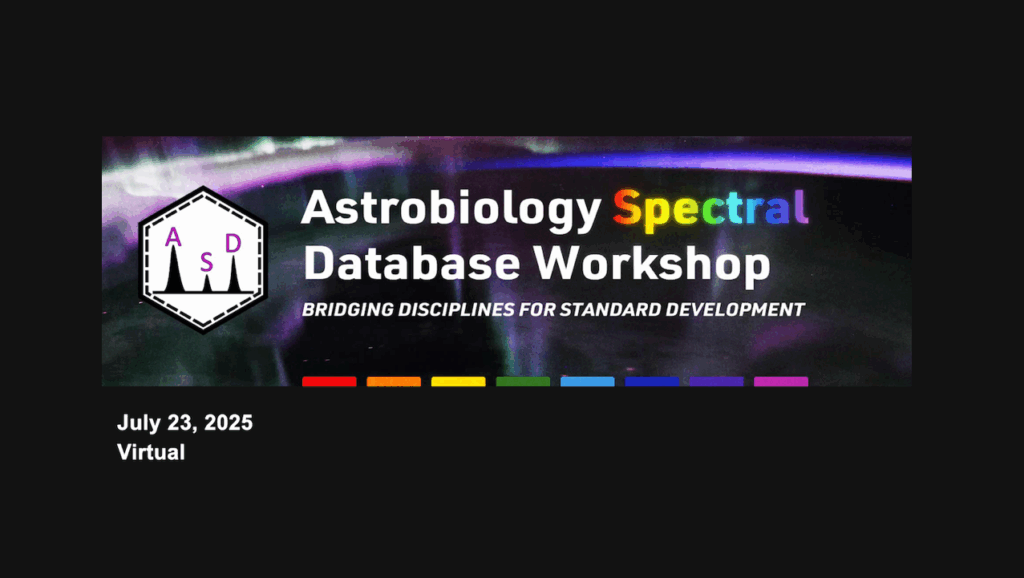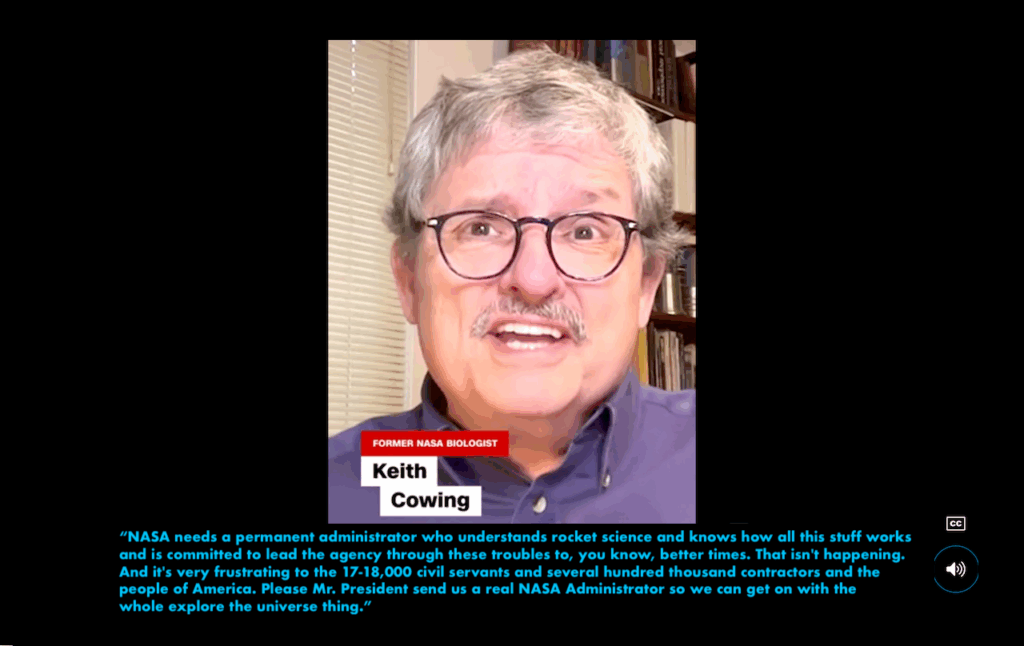Saving Astrobiology at NASA (Part 1) Origins

Origins and Epiphanies
In August 1996, while working at a large meeting of biologists in Seattle, I got a startling email from back east. Within minutes I was at a local copy shop making copies of a news article to hand out at each of the meeting’s sessions. I remember handing a stack to someone who was about to start their session. They asked what this was and why it should be handed out. “They have found evidence that Mars once had life,” I answered. That’s all I really knew. One biologist to another we both locked eyes. It took a moment for the session chair to grasp what I said. Her reaction was similar to mine – joy, awe, and perhaps a tear or two.
“We’re not alone” I thought. Emotions still well up in me when I recount that day. Intellectually I had always known – or hoped – that we’d find life elsewhere. But seeing it in the headlines brought the wondrous reality home to me in a very personal way. As I was soon to learn I was by no means alone.
The news story became clearer as the day progressed. This was, of course the now famous “Mars meteorite” announcement. A research team from NASA Johnson Space Center had found a collection of morphological and chemical features in the ALH84001 meteorite, which they felt were indicative of past life on Mars.
Searching for life’s origins and presence elsewhere in the universe was not a new research endeavor at NASA by any means. Usually referred to as “exobiology” it had been one of the very first things NASA did. Perhaps the most ambitious exobiology missions were the twin Viking landers/orbiters sent to Mars. While they did report back some interesting and somewhat baffling surface chemistry they did not provide solid evidence of life’s presence on present day Mars. Nor did they refute it.
As the years progressed and missions landed on Mars, our view of this world began to shift from dead and dry to wetter and perhaps even possessing extant life. At the same time the oft used phrase “life as we know it” underwent a revolution. Almost at the same moment as the Viking landers arrived at Mars, ecosystems – communities of life forms – were found in places on Earth that biological orthodoxy suggested they had no right to be – dark deep abyssal hydrothermal vents. Temperatures that should fry life and chemicals that should poison it were at the heart of a complex community of life in environmental conditions aptly called “extreme”. If life could exist on Earth in such extreme environments, then it could theoretically thrive in similar locations elsewhere in our solar system.
By the time the ALH84001 announcement had been made the diversity of life and so-called “habitable environments” was rather broad. To top this off planets were now being confirmed circling other suns. Suddenly the universe was looking to be a much more interesting – and habitable place than it had ever been in the past.
In the months and years following the ALH84001 announcement, the detractors came out questioning the researcher’s conclusions. Vice President Gore even requested a briefing on the topic. While the scientific community remains partially doubtful and partially supportive of the ALH84001 claims, something more important resulted. So many people had the same experience that I had – a near epiphany. While the details of the research settled in, people had gotten used to thinking about life elsewhere again. That enthusiasm soon translated into programmatic changes at NASA.
At the same time this excitement was circulating, NASA was going through a cyclic period of reinvention, downsizing, and organizational mood swings. NASA Ames Research Center (ARC), often seen as the home to exobiology, was having tasks removed from it. Rumors of an overt shutdown were heard. There needed to be something for Ames to do – so NASA Headquarters gave it a task they called “astrobiology” – and left it to ARC to figure out just what it meant.
The term “astrobiology” had been used before – back in the 1950s and even earlier, but it never gained as much popularity as the word “exobiology”. Given the broad brush strokes with which astrobiology was being cast, the people who converged on ARC took it and created a discipline that was much, much more than just exobiology-plus” as some detractors had coined this effort. Many long-time exobiologists saw this as just a buzzword exercise, which would not amount to anything except the name of the office where they sent their grant applications. They were wrong. In what I feel will be Dan Goldin’s most important legacy at NASA he took the output from these initial astrobiology planning sessions and funded the emerging discipline of astrobiology. Goldin then recruited a distinguished Nobel Laureate to run the NASA Astrobiology Institute (NAI) – thus adding immense credibility to this emerging discipline.
Few knew at the time, but the ALH84001 announcement had touched Goldin in a deeply personal way. In a farewell speech as he left the agency he recounted how he had told his father of the news. Of this speech I wrote:
“Goldin’s father was in a hospital dying of spinal cancer at the time. Goldin said that he hadn’t expected him to live more than a few days. He told his father, a biologist, of the discovery from Mars. When he was done he told his father that he’d have to keep this quiet for 8 weeks or so. His father joked with Goldin, one New Yorker to another, saying “I am dying of cancer you moron, who am I going to tell!?” As it happened, Goldin’s father lived much longer and was wheeled in front of a television to watch the August 1996 announcement. He died shortly thereafter. Goldin, tears welling up in his eyes, said that his father had “lived to see what his son had done.”
While Goldin’s tenure was filled with controversy I have to say that when I saw him talk about astrobiology – and the questions it sought to answer – you could see that he went to a different place – saying some of the most profound things you’d ever expect to hear coming from the head of a government agency. Astrobiology can do that to you.
Just What is astrobiology?
The effort to define astrobiology got underway in earnest in 1997. A series of workshops at ARC led up to the development of a “roadmap” (a classic NASA approach), which defined what astrobiology was and where it should go. This was a fascinating time since the topic had not been discussed by so many people at the same time in decades – and many of those taking part in the conversation had new ideas.
I spent a lot of time at ARC that year and the years after that and was involved in many of these discussions. One thing became very apparent to me – and everyone involved: this was an unusual group of people. Almost immediately you’d hear people saying that they had never had a chance to discuss these issues with anyone outside of their profession and that the discussions were two way – with teaching and learning going on simultaneously. Geneticists were talking with astrophysicists. Human physiologists were talking with planetary geologists. Astronauts were talking with roboticists. Historians were talking with software engineers.
Astrobiology was inherently multidisciplinary from the moment NASA began to define what it was going to be. It took the best from all of the participants who joined in – with a new discipline, one clearly ready to function in the 21st century as an emergent product of these interactions. astrobiology embraced little questions as easily as it pursued big ones. As such it was able to provide a pervasive context for many of the issues that humanity will face as we expand outward from Earth to explore the universe.
Indeed, at the recent astrobiology Conference in 2006 noted SETI researcher Jill Tarter suggested that astrobiology is “the science of exploration”.
The development of what would become known as astrobiology did not happen with out some food fights- good-natured as they usually were. Some of the participants simply wanted to position astrobiology as a better-funded exobiology program. Others wanted a more expansive program that in its extreme incarnation would subsume most of what NASA does. Enamored as he was with the topic Goldin gave the organizers extensive latitude as they went through this definition process.
Crossing discipline boundaries is one of astrobiology’s organizing principles and the attendees at these meetings did so with glee. You could easily take the notion of what comprises a habitable planet and merge it with Earth science. Finding those planets and the stars that host them could embrace astronomy and planetary science. Figuring out how life evolved could engulf life sciences. Learning how to thrive in new environments could bring in life support and human factors. Considered in its broadest sense astrobiology was seen by some as being “Life, the Universe and everything” (to borrow a popular book title).
The road map which emerged from this initial effort came up with the following top level questions:
- Question 1: How do habitable worlds form and how do they evolve?
- Question 2: How Did Living Systems Emerge?
- Question 3: How can other biospheres be recognized?
- Question 4: How have the Earth and its biosphere influenced each other over time?
- Question 5: How do rapid rates of environmental change affect emergent ecosystem properties?
- Question 6: What is the potential for survival and adaptation beyond the home planet?
A seventh question was considered during the early phases of roadmap development – one that had to do with the broader societal aspects of astrobiology. After some review by the broader scientific community this roadmap was redone. When it was reviewed externally people from various disciplines noted that the roadmap got into areas where they thought astrobiology should not be going since other disciplines already dealt with those topics, thank you very much. A year or so later a new roadmap was developed. While sharing quite a bit in common with the first roadmap, the new version did seek to reign in astrobiology a bit more – but those who saw it as the underpinning of a bigger picture continued undaunted.
The criticisms lodged against the first, more expansive astrobiology roadmap were, to some extent, reactions to encroachment by a new and evolving paradigm upon the status quo. The complaints also had some validity in terms of asking why you’d want to change things that are already working. At that time NASA had a robust life sciences program and many in that community saw astrobiology as a threat – and spoke of it in such terms. Others saw astrobiology’s overt interest in exploration as being a threat to things being done at NASA Johnson Space Center and the Jet Propulsion laboratory albeit at a low key level since the Clinton Administration had issued various edicts that prohibited talk of anything other than robotic exploration.
The top level intent of the revised Roadmap (which has been fiddled with over the years) looked like this as of September 2003 – three main questions and six goals/objectives:
- How does life begin and evolve?
- Does life exist elsewhere in the universe?
- What is the future of life on Earth and beyond?
- Goal 1 Habitable Planets
- Goal 2 Life in our Solar System
- Goal 3 Origins of Life
- Goal 4 Earth’s Early Biosphere and its Environment
- Goal 5 Evolution, Environment, and Limits of Life
- Goal 6 Life’s Future on Earth and Beyond
- Goal 7 Signatures of Life
This page closes with the following statement:
“Life is a central theme that unifies NASA’s vision and mission. A golden age has begun for the life sciences, an age in which science and technology will benefit enormously from a fundamental understanding of the full potential of living systems. This Roadmap outlines how to achieve a better fundamental understanding both of our own world and also of potential habitable worlds and life beyond Earth. This is an agenda for inspiring the next generation of planetary explorers and stewards to sustain the NASA vision and mission.”
In 2002 the future for astrobiology looked bright. In an article I wrote with Baruch Blumberg, Nobel Laureate and Director of the NASA astrobiology Institute, we noted that:
“In five short years, astrobiology has been transformed from a buzz word one had to explain into a overarching research and exploration paradigm that people from diverse backgrounds can intuitively – and easily grasp. Its influence can clearly be seen in a variety of Earth-based and space-based research projects.”
Flash forward 4 years. NASA’s life science activities have all but been abolished. And where there once was no vision for an expansive program of human and robotic exploration, there now is one. Two gaps are waiting to be filled.
Alas, the golden age for the life sciences at NASA never got off the ground. Beginning with its merger with Exploration Systems Mission Directorate (ESMD) under Sean O’Keefe and its subsequent evisceration by Mike Griffin only a faint vestige remains. Although slated for a 50% cut by the President’s FY 2007 budget, astrobiology now remains the only place at NASA where both fundamental and applied life science – in a broad range of subdisciplines remains. This is as good a place as any to seek to rebuild – and at the same time – refocus life science at NASA.
While astrobiology thrived and grew under Dan Goldin – and later under Sean O’Keefe – it is suffering under Mike Griffin. In recent months Griffin has publicly and privately trashed astrobiology as “lacking content”. Science Mission Directorate (SMD) Associate Administrator Mary Cleave has been heard to respond to astrobiology cuts by saying “Dan Goldin doesn’t work here any more”.
In less than a decade astrobiology went from zero – to its zenith – and is now heading back to a null state.
- Part 1: Origins
- Part 2: Mapping the Way
- Part 3: Fighting Back
- Part 4: Astrobiology 2.0
Astrobiology,








